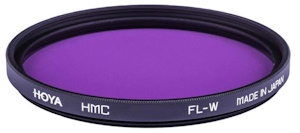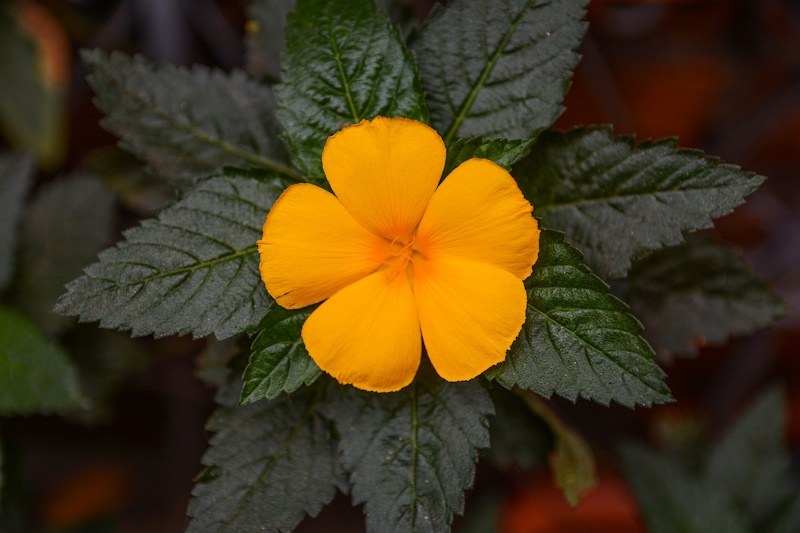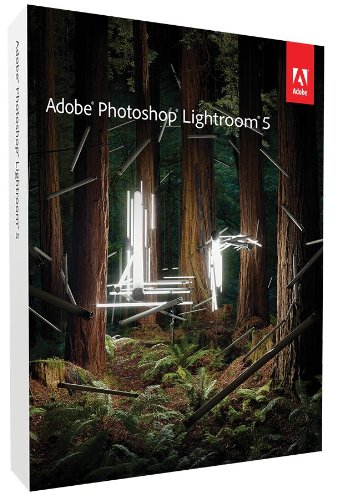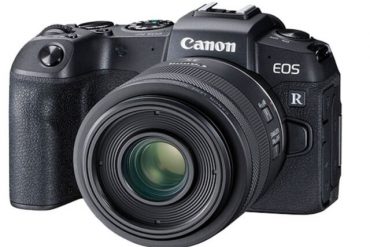Welcome to the world of FLD lens filters! These nifty tools are like the secret ingredient that takes your photography from good to stunning. Let’s dive into what exactly FLD lens filters are and why they’re so crucial in the world of photography.
Definition of FLD Lens Filters
FLD lens filters, short for ‘Fluorescent Light Daylight,’ are designed to improve the quality of images taken under fluorescent lighting conditions. They work by adjusting the color balance of the images to compensate for the peculiarities of fluorescent lighting.
They work their magic by eliminating unwanted color casts and restoring natural colors to your photographs. These filters come in various sizes to fit different lenses and are often made of high-quality optical glass or resin.
For a more in-depth look at FLD filters and how they can enhance your photography, check out our accompanying video below. Whether you’re curious about their purpose, benefits, or practical uses, this video provides clear explanations and examples to help you better understand how FLD filters can make a difference in your shots. Don’t forget to watch and let us know your thoughts!
Why is fluorescent lighting problematic in the first place?
Fluorescent lighting is commonly found in indoor environments such as stores and offices, and it has a peculiar characteristic. It tends to produce a greenish tint in images.
This is because the color temperature of fluorescent lights is different from what our cameras perceive as “white” light. As a result, unwanted greenish hues can appear in your photos.
Importance of FLD lens filters in Photography
FLD lens filters are important in photography for several reasons.
-
Neutralizes the greenish cast produced by fluorescent lighting
Fluorescent lighting emits a greenish cast that can make images look unnatural and unappealing. FLD lens filters effectively neutralize this cast, ensuring that your images have accurate and vibrant colors.
-
Produces natural-looking colors in images
FLD lens filters are designed to reflect red and blue light more effectively while absorbing green light. This correction results in natural-looking colors that are true to life.
-
Enhances the overall quality of fluorescent lighting photography
By neutralizing the greenish cast, FLD lens filters make images look sharper and more detailed. They also help to reduce glare and reflections, further improving image quality.
-
Reduces the need for extensive post-processing
With FLD lens filters, you can capture great images in fluorescent lighting without having to spend a lot of time in post-processing. The filters do a lot of the work for you, which saves you time and effort.
-
Compatible with a wide range of lenses
FLD lens filters are available in a variety of sizes to fit different lenses. They are also compatible with a wide range of camera brands.
-
Easy to use
FLD lens filters are very easy to use. Simply attach them to the front of your lens and you’re ready to go.
Understanding FLD Lens Filters
When it comes to lens filters, it’s important to know about the different types and what makes FLD filters unique. Let’s take a closer look at lens filters and the special features of FLD filters.
Types of Lens Filters
There are several types of lens filters available, each serving a specific purpose. Some common types of lens filters include:
-
UV filters:
These filters block ultraviolet (UV) light, which can cause haze and blur in images.
-
Polarizing filters:
These filters reduce glare and reflections, enhancing the appearance of water and foliage. For Further reading, check the following posts: “The Best Polarizing Filters For All Budgets” and “Linear Vs Circular Polarizing Filter – Why Do I Need One?”
-
Neutral density (ND) filters:
These filters reduce the amount of light entering the camera, allowing for slower shutter speeds and wider apertures. For more information, check the post ”The Neutral Density Filter Tutorial- Your Simple Guide!”
-
Graduated ND filters:
These filters gradually transition from dark to light, allowing for balanced exposure across a scene with varying brightness levels. For more information, check the following post “Circular Graduated ND Filter – Balancing Light Made Easy”
- FLD lens filters: These filters specifically address the color cast produced by fluorescent lighting.
The below table sums up the purpose, functionality, and applications of the above-mentioned lens filters:
| Filter Type | Purpose | Functionality | Applications | |||
|---|---|---|---|---|---|---|
| UV filter | Blocks ultraviolet (UV) light | Prevents haze and blur in images caused by UV light | Landscape photography, outdoor photography | |||
| Polarizing filter | Reduces glare and reflections | Filters out certain wavelengths of light to reduce glare and reflections from water, glass, and other reflective surfaces | Landscape photography, portrait photography, product photography | |||
| Neutral density (ND) filter | Reduces the amount of light entering the camera | Allows for slower shutter speeds and wider apertures in bright conditions | Landscape photography, long exposure photography | |||
| Graduated ND filter | Gradually transitions from dark to light | Balances exposure across a scene with varying brightness levels | Landscape photography, sunrise/sunset photography | |||
| FLD lens filter | Neutralizes the greenish cast produced by fluorescent lighting | Corrects color casts and produces natural-looking colors under fluorescent lighting | Indoor photography, product photography |
Specifics of FLD Filters
-
Purpose and Functionality
FLD lens filters are designed to neutralize the greenish cast produced by fluorescent lighting, resulting in more natural-looking colors in images. They achieve this by selectively absorbing excess green light, allowing red and blue wavelengths to pass through more freely.
This process effectively corrects the color balance of the image, producing more accurate and pleasing colors.
-
Material and Construction
FLD lens filters are typically made of high-quality optical glass or resin and are coated with a specialized dye that absorbs green light. The specific dye formulation varies depending on the manufacturer and the desired level of color correction.
FLD lens filters are available in various sizes and thicknesses to accommodate different lens diameters and filter holders.
Benefits of Using FLD Lens Filters
FLD lens filters are a must-have for photographers who often work indoors with fluorescent lighting. These filters offer several advantages that can improve the quality and accuracy of images captured in such environments. Here are some of the key benefits of using FLD lens filters:
- Color Correction
FLD lens filters are excellent at neutralizing the greenish tint that fluorescent lighting can produce. This tint can distort the natural appearance of subjects and scenes, making it difficult to achieve accurate color representation. FLD lens filters absorb excess green light and allow red and blue wavelengths to pass through more freely, resulting in more natural-looking colors and improved image quality.
- Light Transmission
FLD lens filters are designed to minimize the impact on light transmission, ensuring that they do not significantly reduce the amount of light reaching the camera sensor. This is especially important when working with fluorescent lighting, where light levels may already be limited. By maintaining optimal light transmission, FLD lens filters allow photographers to capture sharp, well-lit images without sacrificing color accuracy.
- Glare and Reflection Reduction
FLD lens filters can also help reduce glare and reflection, which can be problematic in indoor environments with reflective surfaces. Glare can create unwanted hotspots and distort the appearance of subjects, while reflections can obscure details and make images appear washed out. FLD lens filters, when used with other appropriate techniques, can minimize these issues, resulting in clearer, more detailed images.
- Additional Benefits of FLD Lens Filters
Apart from the main advantages mentioned earlier, FLD lens filters offer a few other benefits:
- Consistent color representation: FLD lens filters ensure that colors remain true to life in a series of images, even under different fluorescent lighting conditions.
- Greater control over colors: FLD lens filters neutralize the greenish cast, giving photographers more control over the color palette of their images and allowing them to achieve the desired aesthetic effect.
- Improved image quality: FLD lens filters enhance the overall quality of images taken under fluorescent lighting, resulting in more natural colors, reduced glare, and improved detail.
FLD lens filters are valuable tools for photographers who frequently work under fluorescent lighting conditions. Their ability to neutralize color casts, enhance light transmission, and reduce glare significantly improves the quality and accuracy of images captured in indoor environments. By incorporating FLD lens filters into their workflow, photographers can confidently capture stunning images with natural-looking colors and enhanced detail, regardless of the lighting conditions.
How FLD Lens Filters Improve Photography
Examples of Their Impact on Images
FLD lens filters, as we’ve discovered, are invaluable tools for photographers who often find themselves navigating the world of fluorescent lighting. But let’s delve deeper into their transformative power and explore how they enhance photography in various scenarios.
Indoor Photography

For example, capturing a scene in a museum, where fluorescent lights illuminate the exhibits. Without an FLD lens filter, the artifacts and displays would appear with an unnatural green hue, detracting from their historical significance and aesthetic appeal. However, with the addition of an FLD lens filter, the greenish cast is effectively neutralized, unveiling the true colors and intricate details of the exhibits.
The reds, blues, and yellows emerge with renewed vibrancy, bringing the museum’s treasures to life in a more authentic and captivating manner.
Portrait Photography
Portrait photography demands accuracy in color representation to capture the essence of the subject’s skin tone, hair color, and overall complexion. Fluorescent lighting, with its greenish cast, can disrupt these natural hues, leading to unflattering portraits.

Consider a portrait session, where fluorescent lights illuminate the subject. Without an FLD lens filter, the subject’s skin tone might appear pale and green, while their hair color might lose its natural brilliance. This distortion can detract from the subject’s natural beauty and make them appear unwell.
However, with the addition of an FLD lens filter, the greenish cast is neutralized, restoring the subject’s true skin tone and hair color.
Product Photography
Product photography relies on accurate color representation to showcase products realistically and entice potential customers. Fluorescent lighting, with its greenish cast, can distort product colors, leading to misleading product representations and potential customer dissatisfaction.

For example, FLD lens filters can help to make food items appear more appetizing and appealing in product photos. The filters can help to enhance the colors of fruits, vegetables, and other food items, making them look more fresh and vibrant.
Sunrise and sunset scenes.

FLD filters can also be useful when capturing sunrise and sunset scenes. These filters can add a pinkish tone to enhance the dramatic effect of these scenes. This natural effect eliminates the need for additional editing on your computer.
Choosing the Right FLD Lens Filter
Selecting the appropriate FLD lens filter is crucial for achieving optimal performance and compatibility with your camera equipment. To ensure that you get the most out of your FLD lens filter, it is important to consider a few key factors.
1- Compatibility with Different Lenses
One of the most important considerations is the compatibility of the filter with different lenses. FLD lens filters are available in various sizes to fit different lens diameters. It is important to choose a filter that matches the diameter of your lens to avoid vignetting, which is the darkening of the corners of an image. You can determine the correct filter size by checking the lens specifications or measuring the diameter of the front filter thread.
2. Factors to Consider Before Purchasing
- Strength of Color Correction:
FLD lens filters are available in different strengths, ranging from mild to strong. The strength of the filter should be determined by the intensity of the fluorescent lighting you typically encounter. If the lighting is relatively bright, a stronger filter may be necessary to effectively neutralize the greenish cast.
- Filter Quality:
Opt for high-quality FLD lens filters from reputable manufacturers to ensure optimal performance and durability. These filters are typically made from high-grade optical glass or resin and are coated with a specialized dye that effectively absorbs green light.
- Filter Size:
As mentioned earlier, choose an FLD lens filter that matches the diameter of your lens to ensure proper fit and prevent vignetting.
- Compatibility with Filter Holders:
If you plan to use a filter holder, ensure that the FLD lens filter is compatible with the holder’s size and threading system.
Additional Considerations:
- Brand: Choose a reputable brand known for producing high-quality FLD lens filters.
- Price: FLD lens filters range in price depending on the brand, quality, and size.
- Reviews: Read reviews from other photographers to get an idea of the performance and quality of specific FLD lens filters.
Recommended FLD Lens Filters
With a wide range of options available, choosing the right FLD lens filter can be a daunting task. To help you navigate the selection process, we’ve compiled a list of recommended FLD lens filters based on their performance, quality, and value for money.
1- Hoya 77mm FLW Fluorescent Multi Coated Glass Filter

The Hoya Fluorescein Filter is a popular choice among photographers due to its exceptional color correction and high-quality construction. It effectively neutralizes the greenish cast of fluorescent lighting, producing natural-looking colors and enhancing the overall image quality. Additionally, the filter’s multi-coating repels dust, water, and fingerprints, making it easy to clean and maintain.
2- Tiffen 67mm FL-D Fluorescent Filter

The Tiffen 67mm FL-D Fluorescent Filter is a versatile and effective filter that can be used to neutralize the greenish cast produced by fluorescent lighting. This filter is constructed from high-grade optical glass and features a specialized dye that selectively absorbs excess green light, allowing red and blue wavelengths to pass through more freely. This process effectively corrects the color balance of the image, resulting in more natural-looking colors and improved overall image quality.
3- Sedremm Universal UV CPL FLD Filter Set

The Sedremm Universal UV CPL FLD Filter Set is a versatile and comprehensive set of filters that can enhance your photography in various lighting conditions. The set includes a UV filter, a polarizing filter, and an FLD filter, each designed to address specific challenges and improve the quality of your images.
Tips for Using FLD Lens Filters Effectively
To maximize the benefits of FLD filters, it’s essential to use them effectively and properly care for them. Let’s explore some practical tips to optimize your FLD filter usage.
- Understand the Strength of Your FLD Filter:
FLD lens filters come in various strengths, ranging from mild to strong. The appropriate strength depends on the intensity of the fluorescent lighting you encounter. If the lighting is relatively bright, a stronger filter may be necessary to effectively neutralize the green cast.
- Consider the Lighting Conditions:
FLD lens filters are specifically designed for fluorescent lighting. While they can provide some benefits in other lighting conditions, their primary purpose is to address the green cast produced by fluorescent lights.
- Ensure Proper Filter Placement:
Attach the FLD lens filter securely to the front of your lens. Improper placement can lead to vignetting, the darkening of the corners of the image.
- Adjust Exposure Settings:
FLD lens filters may slightly reduce the amount of light entering the camera. Adjust your exposure settings accordingly to maintain proper exposure.
- Experiment with Different Filters:
Try different FLD lens filters from reputable brands to find the one that best suits your needs and preferences.
- Mind the White Balance:
When using an FLD lens filter, it’s generally recommended to set your camera’s white balance to the appropriate fluorescent light setting for enhanced color accuracy.
- Post-Processing:
While FLD lens filters effectively neutralize the greenish cast, minor adjustments may still be needed in post-processing to fine-tune the overall color balance.
Frequently Asked Questions (FAQs)
Let’s delve into FAQs about FLD lens filters to clarify any doubts and enhance your photographic understanding.
What is an FLD lens filter?
An FLD lens filter, also known as a fluorescent daylight filter, is a specialized filter designed to counteract the greenish cast produced by fluorescent lighting. These filters selectively absorb excess green light, allowing red and blue wavelengths to pass through more freely. This process effectively corrects the color balance of the image, resulting in more natural-looking colors and improved overall image quality.
When should I use an FLD lens filter?
FLD lens filters are primarily used in indoor environments where fluorescent lighting is prevalent, such as offices, museums, and stores. They are particularly beneficial for capturing portraits, product shots, and still-life images under fluorescent lighting to ensure accurate color representation.
Can the white balance system be used instead of the FLD filter?
The white balance system in digital cameras adjusts color temperature, but FLD filters specifically counteract color shifts from fluorescent lighting. While white balance helps, FLD filters are more targeted for correcting fluorescent light color casts in photography.
How do I use an FLD lens filter?
Attach the FLD lens filter securely to the front of your lens. Once attached, adjust your exposure settings if necessary as FLD filters may slightly reduce the amount of light entering the camera.
How do I clean an FLD lens filter?
Use a microfiber cloth and lens cleaning solution to gently clean your FLD lens filter. Avoid using abrasive materials or harsh chemicals that could damage the filter coating.
How do I store FLD lens filters?
Store your FLD lens filters in individual protective cases or pouches to prevent scratches and damage.
Are FLD lens filters compatible with all lenses?
FLD lens filters are available in various thread sizes to accommodate different lens diameters. Choose a filter that matches the diameter of your lens to ensure proper fit and prevent vignetting.
Thanks for reading, I hope you enjoyed the article, if you have any questions just drop them below & I will be happy to answer you.
The featured Image by toan van from Pixabay
If you enjoy the site, don’t forget to subscribe, we will only inform you when a new article is posted.









FLD lens filters are indispensable for photographers navigating the challenges of fluorescent lighting. The detailed breakdown beautifully clarifies their purpose, functionality, and benefits. From color correction to glare reduction, these filters prove to be essential tools, ensuring accurate color representation and improved image quality. A comprehensive guide for photographers seeking optimal results in indoor environments.
Thanks